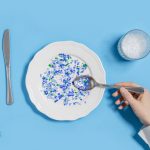Scientists discover your food packaging is poisoning you with microscopic plastic particles
 (NaturalHealth365) You thought you were just opening a water bottle. Unwrapping your sandwich. Popping the lid on your takeout container. But a massive new study just revealed something that’ll make your stomach turn: you’ve been feeding yourself thousands of tiny plastic particles with every single meal.
(NaturalHealth365) You thought you were just opening a water bottle. Unwrapping your sandwich. Popping the lid on your takeout container. But a massive new study just revealed something that’ll make your stomach turn: you’ve been feeding yourself thousands of tiny plastic particles with every single meal.
The plastic contamination isn’t coming from ocean pollution or airborne microplastics. It’s coming directly from the packaging that’s supposed to protect your food.
Scientists drop a bombshell health warning
A study published in NPJ Science of Food analyzed over 100 research papers and confirmed what many suspected. Still, nobody wanted to admit that the normal use of plastic food packaging sheds microscopic plastic particles directly into food and drinks.
Lisa Zimmermann, the lead researcher from the Food Packaging Forum in Zurich, stated: “This is the first systematic evidence of how normal and intended use of foodstuffs packaged in plastics can be contaminated with micro- and nanoplastics.”
These particles are so microscopic that they travel through your digestive system, enter your bloodstream, and lodge in your organs. Scientists have found plastic invaders in human brain tissue, reproductive organs, blood, lungs, liver, and breast milk.
Simple actions that poison your food
Opening a bottle releases plastic particles into whatever’s inside. Cutting food on a plastic cutting board? You’re shaving plastic onto your dinner. Washing that “reusable” plastic container repeatedly? Each wash releases more particles.
Glass jars with plastic-lined lids aren’t safe either. Every twist of that cap breaks off microscopic plastic particles that contaminate the contents.
One study found 240,000 plastic particles in a single liter of bottled water. That’s nearly a quarter million plastic pieces per bottle.
Researchers washed melamine bowls 10, 20, 50, and 100 times, measuring the release of plastic after each cycle. More washing meant exponentially more plastic contamination.
The worst plastic criminals
The study analyzed 600 scenarios and identified the biggest offenders:
Bottles caused 31% of all contamination cases. Water bottles, juice bottles, any beverage container – opening them means consuming plastic.
Tea bags ranked second. Your soothing cup of tea may contain thousands of plastic particles released during the steeping process.
Takeout containers and food packaging were major sources. Polystyrene (Styrofoam) containers shed more plastic than other materials.
Ultra-processed foods had dramatically higher contamination levels than fresh foods because they come into contact with plastic equipment during multiple processing steps.
Certain plastics are worse offenders. Polystyrene (recycling code 6) was among the worst, while plastics with recycling code 3 contain dangerous phthalates that can migrate into food.
Your body is under attack
These plastic invaders don’t pass through your system harmlessly. A March 2024 study in The New England Journal of Medicine found people with plastic particles in their arteries were twice as likely to have heart attacks, strokes, or die early.
Plastic particles act like Trojan horses, carrying toxic chemicals into your cells. They disrupt hormones, trigger inflammation, and interfere with cellular function.
These particles cross the blood-brain barrier and accumulate in brain tissue. Scientists have found them in reproductive organs, raising questions about fertility and reproductive health.
Protect yourself against plastic contamination
You can dramatically reduce exposure starting today:
- Switch to glass and stainless steel containers for food storage and water bottles. They cost more upfront, but they protect your health in the long term.
- Never heat food in plastic or put plastic in dishwashers. Heat increases plastic particle migration dramatically.
- Avoid plastics marked 3, 6, and 7. These contain the most toxic chemicals and shed the most particles.
- Choose fresh, minimally processed foods over ultra-processed options that frequently come into contact with plastic processing equipment.
- Use wooden or bamboo cutting boards. Every time a knife cuts plastic, it releases particles into the food.
- Install a reverse osmosis (RO) water filtration system that will remove microplastics, as tap water also contains these contaminants.
Your detox systems need help
Plastic contamination is unavoidable in our modern world. Your liver, kidneys, and lymphatic system work overtime to process and eliminate these foreign invaders.
We’re living through the largest uncontrolled human experiment in history. Every meal, drink, and food package potentially contributes to your body’s toxic burden.
The research is clear: plastic packaging, intended to protect our food, is contaminating it with thousands of microscopic particles that end up in our organs. While we wait for systemic changes, taking control of our exposure and supporting our body’s natural detox systems has become essential for survival.
If you’re ready to reduce your toxic burden, consider getting access to the Whole Body Detox Summit. This program features 27 leading detoxification experts who understand how to help your body eliminate environmental toxins like microplastics.
Discover science-backed protocols for supporting your liver, enhancing cellular detox pathways, and protecting your family from the mounting toxic load in our food supply. Get lifetime access to cutting-edge strategies that could help your body defend itself against plastic contamination and other environmental threats. Because in a world where even opening a water bottle exposes you to toxins, comprehensive detox support isn’t optional – it’s survival.
Sources for this article include:



